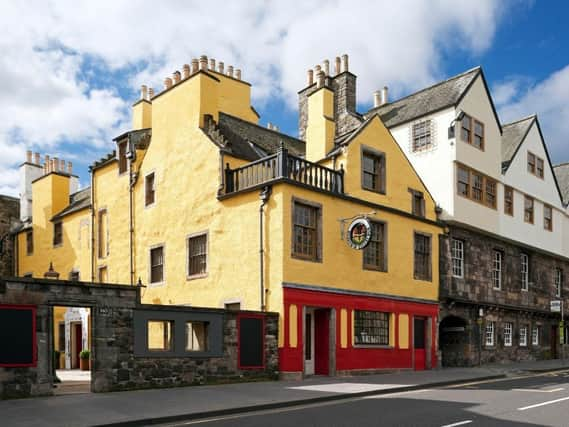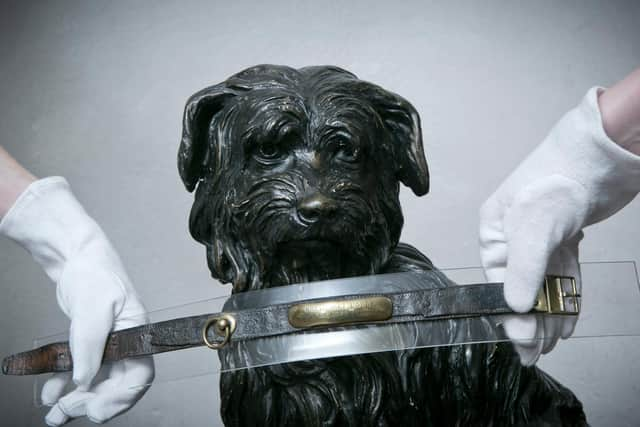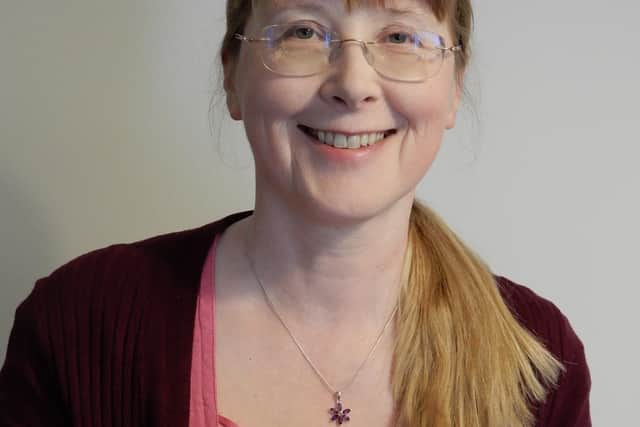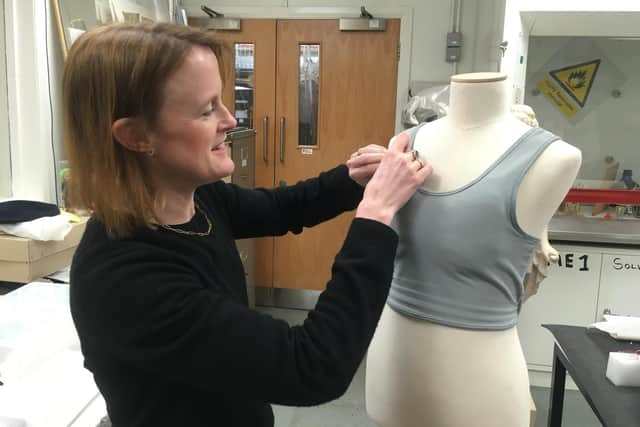Here's where you will find Greyfriars Bobby's collar, preserved in a collection of Edinburgh's quirkiest items


THE Museum of Edinburgh opened to the public in 1932 and was the first municipal museum in Edinburgh to tell the story of the city, its people, its crafts and its buildings.
In no other venue in the City will you find silver goblets and ceramic figures rubbing shoulders with wooden water pipes, historic costume and wartime objects. This quirky mixture is all displayed within a maze of historic rooms that give visitors a real insight into the houses of Edinburgh’s Old Town.
Advertisement
Hide AdAdvertisement
Hide AdThe Museum was formerly known as Huntly House Museum after the warren of 16th and 17th century buildings in which it is housed.


The earliest part of the building dates to the late 16th century, with further additions in the 1640s. By the early 20th century, the building had become a derelict ruin, almost roofless and rotting. Thankfully, it was saved and restored.
Back in the 1920s, the Canongate was a slum, and many complained that a museum housing such significant civic collections shouldn’t be located there, where few people dared to wander. They were proved wrong when the museum flung open its doors and was invariably described as the “treasure house of relics of Old Edinburgh”. The museum’s unique atmosphere ensures that it continues to be just that.
In our first floor galleries, visitors can see a pair of silk damask shoes worn in the middle of the 18th century by Henrietta Nimmo of Bridgehouse, near Linlithgow. Their sparkling buckles and expensive floral fabric show the glamour of the age, whilst the wooden pattens worn over them for protection show the reality of walking through the filthy streets of Edinburgh’s Old Town.
Advertisement
Hide AdAdvertisement
Hide AdOne of our most-visited objects is the collar worn by Greyfriars Bobby, the famously loyal dog who kept a vigil by his master’s grave in the 1860s and 70s. The collar was presented to Bobby by the Lord Provost in 1867, making him an officially registered dog. Our Bobby display presides over a floor where visitors can also find James Craig’s plans for laying out Edinburgh’s New Town. These form the centrepiece of a new gallery exploring the Enlightenment ideals and hard physical labour that brought this stunning part of our City into being.


Vicky Garrington, History Curator says “My favourite objects on display are a set of simple metal candle holders with pointed bases. These were wedged into the masonry of people’s houses to illuminate them for the Royal Visit of George IV in 1822. They are humble objects that show Edinburgh coming together to celebrate, a spirit which lives on in the City”.
Alongside the historical exhibits are galleries devoted to Edinburgh’s crafts. Helen Edwards, Curator of Decorative Arts shares her favourite piece, an egg-shaped coffee urn, made in Edinburgh in about 1755.
Helen says, “They are a uniquely Scottish design and I love its shape. On its spindly legs it resembles a living creature. Another highlight is a silver tea kettle. This was given as a prize at Leith races in 1754. The race was won by a horse called Thistle Whipper owned by Mr William Bates of Morpeth. Contemporary pieces include a lovely silver Griffin made by Edinburgh silversmith Bryony Knox.”
Advertisement
Hide AdAdvertisement
Hide AdThe glass gallery was redisplayed in 2018 and showcases our collection of glassware from the Holyrood and Edinburgh Crystal Glassworks. There are beautiful cut and engraved pieces - a glass jug engraved with the Scott Monument and a huge table centrepiece made for Queen Victoria, with over 40 pieces it took two years to be completed.


Yet Helen says, “My favourite things in the glass gallery are a glass top hat, trumpet and a sword, made by glassworker to show off their skills.”
The ceramics collection includes many different Scottish makers - early porcelain made at West Pans the 1760s, leaf shaped dishes from the Bellfield Pottery in Prestonpans and Buchans pottery from Portobello. There are some wonderfully glazed pieces from the Holyrood Pottery and exquisite hand decorated items from the Bough and Mak’Merry Studios.
“My favourite piece of ceramics is a Wemyss-ware soup tureen in the shape of a fish decorated with bright orange and pink glazes.”
Advertisement
Hide AdAdvertisement
Hide AdHelen Edwards is Curator of Decorative Arts and Vicky Garrington is History Curator at Museums & Galleries Edinburgh
Further information on The Museum of Edinburgh can be found at www.edinburghmuseums.org.uk